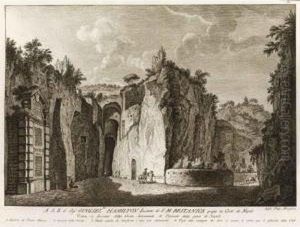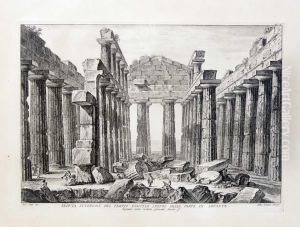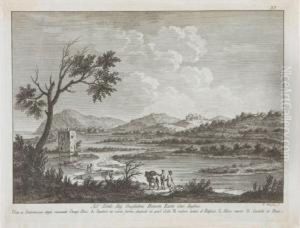Filippo Morghen Paintings
Filippo Morghen, born in 1730, was an Italian engraver and printmaker of the 18th century, known for his detailed and imaginative engravings. He hailed from a family of artists; his father was the painter Francesco Morghen. Although his exact place of birth is not clearly documented, it is believed that he was born in Naples, which was a vibrant artistic center during his lifetime.
Morghen’s work is particularly noted for its technical skill and finesse in engraving, which he applied to various subjects including landscapes, portraits, and historical scenes. He was a prolific artist, and his prints were widely disseminated, contributing to his reputation across Europe. One of his most famous series of engravings is based on the discovery of the ancient Roman cities of Pompeii and Herculaneum, which were covered by the eruption of Mount Vesuvius in 79 AD. These works were influential in spreading the neoclassical style and fed the European imagination with images of the grandeur of ancient Rome.
In addition to his works on Pompeii and Herculaneum, Morghen is known for his engravings after famous paintings by other artists, such as Raphael. He was part of the intellectual circles of his time and often collaborated with contemporary artists and thinkers. His engravings were not just reproductions; they were interpretations that added new layers of meaning to the original works.
The latter part of Filippo Morghen’s life is less documented, but it is known that he was still active as an artist after 1800. The date of his death is uncertain, but references to his work suggest that he was alive at least until 1807. Morghen’s legacy lies in his masterful technique and his role in the dissemination of neoclassical aesthetics through his engravings, which continue to be studied and appreciated for their artistic merit and historical significance.


